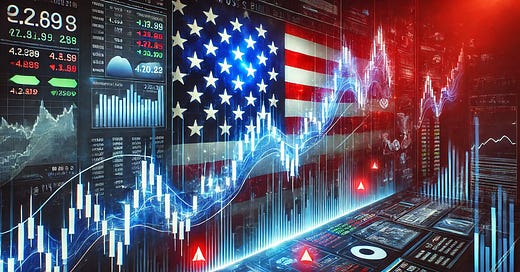The markets have been on a tear for the past few years, with the S&P 500 gaining over 70% since the lows of October 2022. A combination of AI’s growth, demographic shifts, and global liquidity has provided the rocket fuel for this incredible run.
Riding this wave has been a great move for anyone who's followed my work as the TikStocks Portfolio surged 36% in 2023 and 45% in 2024.
But even the most optimistic investors must admit: bull markets don’t last forever.
The key question then becomes, how do we identify when the stock market is nearing its peak?
Historical Indicators of Stock Market Peaks
Bull markets are cyclical. They go up, they go down, and ultimately, they end — often when you least expect it. To understand when this might happen, we can look at historical market tops.
One of the most consistent indicators of a market top is when investor sentiment reaches extremes. High consumer confidence often signals overexuberance, as people start to believe that the good times will never end, which we saw during the Dot Com Bubble:
Another sign that a bull market may be nearing its end is excessive valuation. For instance, in 2021 the Shiller Cyclically Adjusted Price-to-Earnings (CAPE) ratio hit 38.3 — higher than the levels seen before both the 1929 and 2000 market crashes.
Markets nearing their peak tend to exhibit signs of speculative behavior. In the late 1990s, day trading became a mainstream activity as people quit their jobs to trade stocks full-time, while in 2020-2021 we had the meme stock and SPAC frenzy which bid up prices to unsustainable levels.
The Federal Reserve has been a key player in most major market peaks, popping bubbles in both 1999 and 2022 when they raised interest rates:
Financial stress - spike in corporate bond spreads - can signal an impending slowdown as they suggest tightening credit conditions, which leads to lower liquidity and can slow down the overall market.
Lastly, weak market breadth - or the number of stocks rising and driving the market higher - signals a bull run is losing stream. We so this in 2021–2022 when fewer than 45% of S&P 500 stocks were outperforming the index by the end of 2021:
So what are these indicators telling us about the current environment? And what should we buy on the dip?
Let's take a look.









